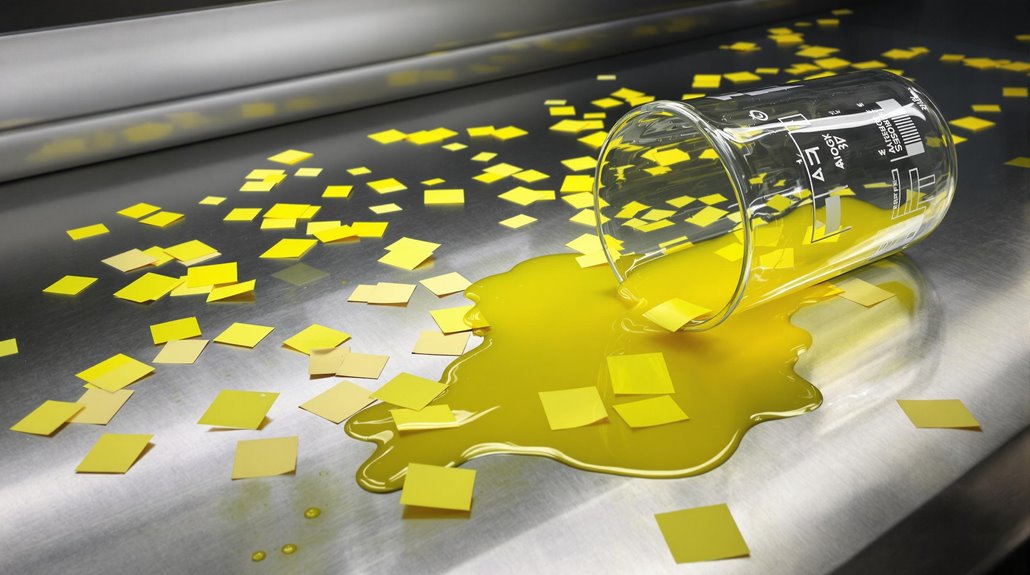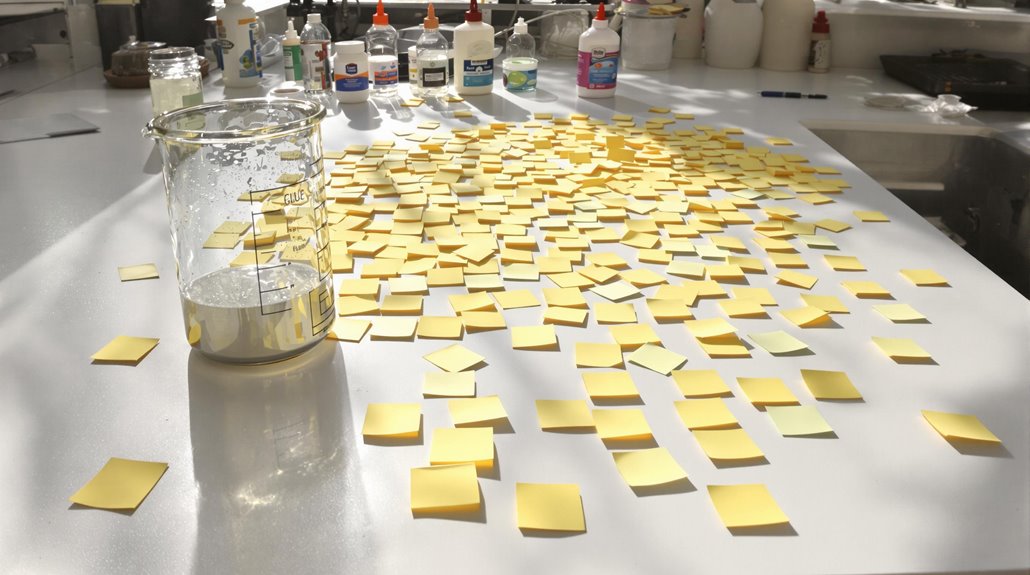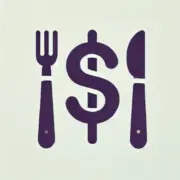Are Sticky Notes Taking Over Your Desk? There's a Better Way to Stay Organized
You might know the Post-it Note story. Back in 1968, a scientist named Spencer Silver made a mistake in his lab at 3M. He made glue that didn't stick very well. Most people would call that a fail. But not Art Fry. He saw how this "bad" glue could help him keep track of his choir songs. He put it on yellow paper, and boom – the Post-it Note was born!
At first, not many people wanted to buy them. But 3M didn't give up. They gave out free samples in a small town called Boise. People loved them! Soon, everyone wanted these handy sticky notes. Now you can find Post-it Notes in over 4,000 different types all around the world.
Stop Losing Track of Customer Notes and Sales Leads
While Post-it Notes worked great in the past, today's business needs a smarter solution. A Customer Relationship Management (CRM) system helps you:
- Keep all customer info in one place
- Never miss a follow-up
- Track leads without paper
- Get more done in less time
Ready to get organized? Try a modern solution that works better than sticky notes. Start your free trial now and see how much easier work can be!
Key Takeaways
The story of Post-it Notes began when a man named Spencer got glue wrong. But his mistake turned out to be special. The glue could stick and unstick many times!
The team gave free Post-it Notes to people in a city called Boise. Almost everyone who tried them wanted to buy more.
At first, people were not sure about these new sticky notes. But the makers listened to what people said and made the notes better. Soon, everyone trusted them.
The company worked hard for five years to sell Post-it Notes the right way. Even though sales were slow at first, they kept trying new ideas.
What started as a way to mark books grew into something much bigger. Now you can find Post-it Notes in many colors and sizes all over the world.
The Failed Lab Experiment

Spencer was a scientist who tried to make super-strong glue at 3M in 1968. He wanted to make glue for airplanes, but something funny happened. Instead of strong glue, he made a weak one that could stick and unstick easily.
Spencer felt sad at first. His friends at work thought his new glue wasn't good. They wrote it down as a big mistake.
But sometimes the best things come from mistakes! This weak glue that no one wanted turned into something amazing. It became the sticky stuff we use on Post-it Notes today.
Behind the Yellow Square
Spencer found something sticky by accident. But making Post-it Notes wasn't easy at first. When they tried to sell Press'n Peel in 1977, people didn't want it.
Then Art Fry had a great idea. He needed something to mark pages in his church songs. He worked with his friends Henry and Roger to make the sticky stuff better. They made it so you could stick it many times.
The yellow color wasn't planned. They used yellow paper because they'd extra. Now yellow is what people think of when they see Post-it Notes.
Many good things happened:
- When the first try failed, they found new ways to fix it
- They gave free samples to people in Boise
- Almost all people who tried it wanted to buy more
- They changed the name to Post-it Notes
- In 1980, they started selling it all over America
From Mistake to Innovation

Spencer Silver wanted to make super-strong glue at 3M in 1968. But his glue was too weak. Most people would have given up. Spencer did not.
The weak glue sat in the lab for five years.
Then Art Fry had an idea. Art sang in a church choir. His paper bookmarks kept falling out of his song book. This made him mad.
Art thought about Spencer's weak glue. He put some on yellow paper from the lab. The paper stuck but came off clean. It was perfect!
Spencer and Art worked as friends to make Post-it Notes.
They learned that mistakes can lead to great things if you keep trying and work with others.
Finding Its Purpose
Art Fry found a way to make sticky notes work. Back in 1974, he was singing in church when his bookmark kept falling out of his book. He thought about some weak glue his friend Spencer had made at work.
Art worked at 3M and saw how this glue could help. He cut up yellow paper and added the glue to make small notes that could stick and peel off. His boss let him work on this idea during work time.
Other workers at 3M loved using these sticky notes. They put them on papers and desks to share quick messages. At first, the notes were called "Press 'n Peel" and didn't sell well in stores. But people who tried them wanted more.
Art and his team kept trying. They believed in their sticky notes. Now, these bright yellow papers sit on desks all over the world. What started as a mistake turned into something everyone uses every day.
Bringing Ideas to Life

Back in 1968, Spencer Silver made a cool mistake in his lab – he made a glue that wasn't very sticky. Art Fry later saw how useful this weak glue could be. He wanted to make bookmarks that would stay in place but not hurt his books.
Time Marker | What Happened
————|—————
1968 | Made weak glue by accident
1974 | Thought of sticky bookmarks
1977 | First try selling it failed
1979 | Test sales worked great
1980 | Sold in all stores
The path to make Post-it Notes was not quick. The team picked yellow paper to make them easy to see. They had to get the glue just right – sticky enough to hold but easy to pull off. The first try to sell them didn't work well. But they kept trying and making them better. Now, these little yellow notes are all over the world.
False Starts and Setbacks
Getting Post-it Notes into stores wasn't easy. They failed many times before they found success.
When the team first tried selling them in 1977, people didn't know what to do with them. The sticky notes had a different name back then – Press'n Peel. No one bought them.
This was very hard for the team at 3M. They'd to take all the notes off store shelves and start over. They needed a new plan to show people why sticky notes were useful.
Sick of wasting hours on marketing that doesn’t pay off?
What if you could skip the hard work and still grow your business?
Automate your marketing and see how easy it can be to save time and close more deals.
Discover the simplest way to take charge of your business!
Failed Launch Strategies
The story of Post-It Notes shows us how even great ideas can have a rough start. At first, no one thought these little yellow papers would work – not even the folks who made them!
The team tried to sell them as a board you could use over and over. That didn't work at all. For five whole years, the bosses at 3M couldn't see how special these sticky notes were.
What went wrong:
- The first try at selling them failed
- The bosses took five years to see how good they were
- Test stores got mixed results
- No one wanted the bulletin board idea
- People didn't get it when shown how to use them
But the team didn't give up. They tried something new – they gave out free samples in Boise, Idaho. That's when people fell in love with Post-It Notes.
Market Struggles Through 1977
Things were tough for Post-it Notes in 1977. When 3M tested their new "Press 'n Peel" sticky notes in four cities, people didn't like them.
It's funny to think these notes that we all use today almost never made it to stores. People couldn't see why they needed sticky notes. The bosses at 3M weren't sure about them either. They almost gave up on the whole thing.
Making the notes was hard too. The special glue wouldn't stick to the paper the right way. Spencer Silver made this new kind of glue by accident. At first, no one thought his glue was useful.
But in 1973, a new boss came in and helped Spencer keep working on his idea.
The Boise Breakthrough

In 1978, Post-it Notes had a hard time selling. No one wanted to buy them. But then, something big happened in Boise, Idaho.
3M gave away lots of free Post-it Notes to people at work. They showed workers how to use the sticky notes. Workers stuck them on papers, desks, and files. They wrote quick notes and moved them around.
Soon, people fell in love with Post-it Notes. Nine out of ten places that tried them wanted to buy more. They saw how helpful these little yellow papers could be.
What made it work:
- Free notes for everyone
- Real people showing how to use them
- Asking what people thought
- Letting people try them out
- Giving them to all kinds of workers
The Boise test taught us something simple: when people try something new, they can see why it's good.
Now other companies try to do the same thing.
Building Consumer Trust
When people in Boise started using Post-it Notes, 3M learned something big. They found out that talking openly with people who buy their products builds trust. 3M asked people to tell them what they liked and didn't like about Post-it Notes at work.
3M cared about what each person had to say. They quickly answered questions and listened to ideas. When people gave good ideas, 3M made their products better. They helped solve problems before they got big.
As more people tried Post-it Notes, happy users told their friends how great they were. This helped new people trust Post-it Notes and want to use them too.
Global Sticky Note Phenomenon

People love sticky notes! They started small in Boise but now you can find them all over the world. More than 150 countries use these handy papers that stick to things. Today, there are over 4,000 kinds of sticky notes in offices, schools, and homes.
These little notes come in bright colors to help people stay organized. Many workers use them to share ideas and work together. You can stick them anywhere, and they come off clean without leaving marks. People also like that some sticky notes are better for the earth, made from plants and recycled stuff.
You can even use sticky notes with your computer and phone apps to get work done faster. After more than 40 years, billions of people still buy and use sticky notes every year.
These simple papers help us talk to each other, stay organized, and work together. No matter where you go in the world, you'll find people using sticky notes to make their lives easier.
Leadership Through Persistence
Think about the story of Post-It Notes.
Two friends named Spencer and Art made them by accident. They were trying to make strong glue for airplanes, but their glue was too weak. Most people would give up, but not Spencer and Art.
They saw that this "weak" glue could do something special. It could stick notes to things and peel off without leaving marks. Many people told them it was a bad idea. But they kept trying and trying.
Now, we see Post-It Notes on desks all around the world. Spencer and Art showed us that good leaders don't give up when things go wrong. They look for ways to turn mistakes into good things.
Turning Failure Into Success
We all fail sometimes, but that's how we learn and grow. Think of failure like a teacher showing us a better way.
Even big companies learn from their mistakes. Take the Post-it Note – it started as a glue that didn't work well. But someone saw that this "bad" glue could do something new and cool.
When things go wrong:
- Look at what happened and why
- Talk with your team about new ideas
- Try using failed ideas in different ways
- Help your team feel okay about mistakes
- Show others that failing helps us learn
This way of thinking helps turn bad luck into good results. When we're not afraid to fail, we can try new things.
And trying new things leads to big wins.
Vision Despite Initial Setbacks
Sometimes good things come from mistakes. Just ask the people who made Post-it Notes. In 1968, Spencer Silver made a glue that was too weak. Most people would call that bad luck. But his friend Art Fry saw something special in it. He knew it could make notes that stick and peel off easily.
The road wasn't easy. When they first tried to sell Post-it Notes, not many people wanted them. But the team kept trying. They gave away free samples so people could try them. Almost everyone who tried them wanted more!
What started as a mistake is now a big hit. Today, people use more than 50 billion Post-it Notes all over the world. This shows that we should never give up when things don't work at first.
Marketing Against the Odds

When things get tough in business, it takes more than just gut feelings to win.
Think about Post-It Notes. At first, people didn't believe these little yellow papers would work. But the team kept going.
They spent money wisely on telling people about Post-It Notes. They didn't want quick wins. They wanted to make friends with customers who'd stick around.
To win when others are bigger than you:
- Look at what worked for others
- Use real facts, not just what you think
- Plan for what other companies might do
- Move your money where it helps most
- Buy the tools you need to stay ahead
Post-It Notes started by accident. But smart planning turned them into a winner.
This shows how good marketing can help you win, even when things seem hard.
Beyond Paper Communication
We used to stick paper notes on walls to share ideas. Now we talk in new ways using computers and phones. Teams can work together even when they're far apart.
Pictures help us explain big ideas better than words alone. We use fun moving pictures and short videos to show others what we mean. This makes it easier for everyone to understand.
Teams now meet using video calls and special computer tools. These new ways of working help people talk and work together, no matter where they're in the world.
Conclusion
The Post-it Note started as a mistake. A scientist tried to make strong glue but made weak glue instead. But this "failed" glue turned out to be perfect for sticky notes! Now millions of people use Post-it Notes every day to share ideas and remember things. What began as yellow paper squares has grown into digital tools that help people work together better.
Stop Losing Important Customer Notes and Follow-Ups
Are sticky notes with customer details cluttering your desk? Keep losing track of who needs a call back? A CRM system puts all your customer info in one safe place. You can set reminders, track leads, and never miss a follow-up again. Plus, your whole team can see the same information.








